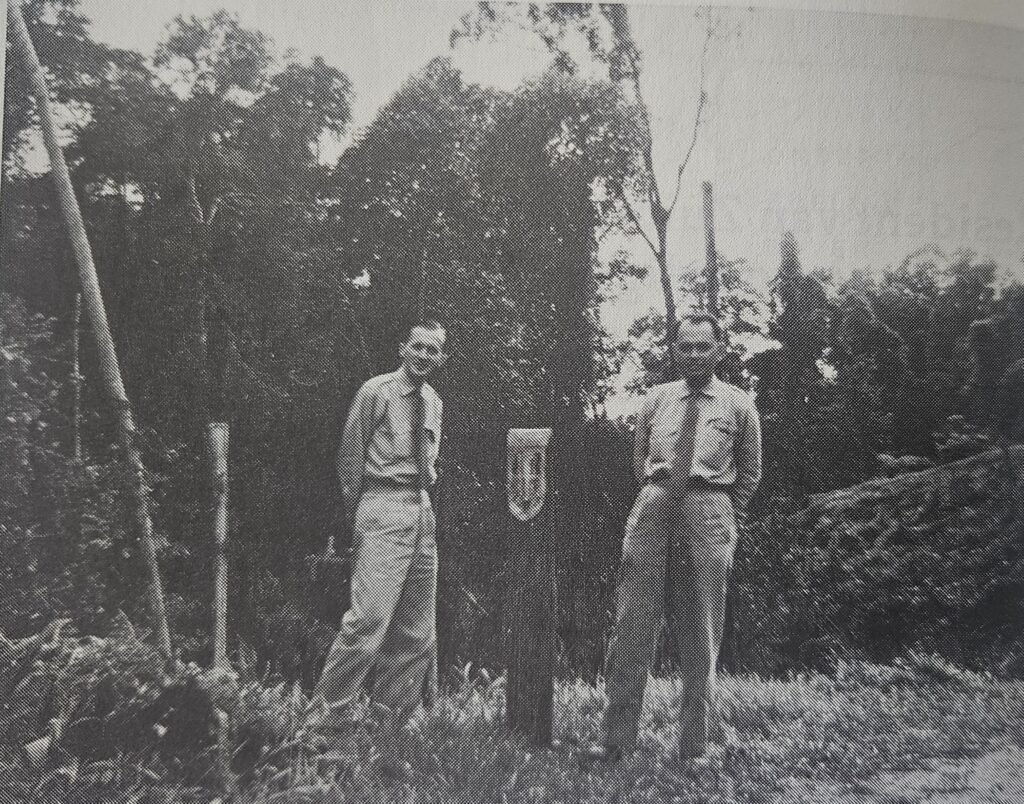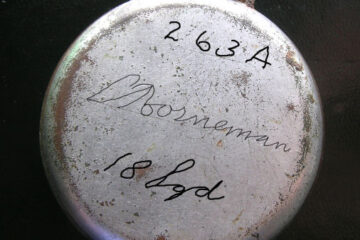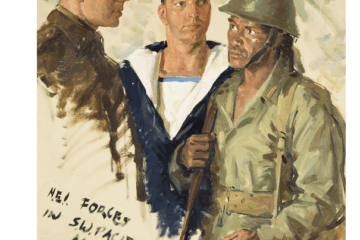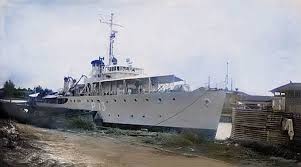In the early 1950s, Resident Karel Knödler of South New Guinea crossed the frontier into Australian-administered Papua New Guinea. His visit offers a rare first-hand Dutch view of daily life and administration across the colonial border that once divided the island.
A cordial exchange across the frontier
Karel Knödler had regular contact with his eastern neighbour, the district commissioner of Daru, in the southwest of Australian New Guinea. The two men agreed that familiarity would be useful should future disputes arise among Papuan border communities. In May of that year, Knödler received an invitation to visit Daru and to attend a wider administrative conference in Port Moresby with all district commissioners of Australian Papua New Guinea.

After receiving permission from the Dutch governor, he travelled eastward, hosted in Port Moresby by the Dutch liaison officer Kees Pley and his wife Els. As Knödler noted, the liaison officer’s task was to keep Hollandia informed of administrative decisions and developments in the Australian territory, while the Australian liaison officer in turn reported to Port Moresby on events in Dutch New Guinea.
Kees and Els Pley were well regarded among the Australian colonial community. Despite caring for two school-age children, Els organised regular receptions that strengthened Dutch–Australian relations. Kees introduced Knödler to the administrator, the district commissioners, and other officials, and briefed him on the conference agenda.
Contrasts in colonial practice
The subject of the conference was the sale of alcohol to indigenous Papuans. In Dutch New Guinea a permit system applied: alcohol could be sold to anyone of age, without racial distinction, though minors were excluded. In Australian Papua New Guinea, by contrast, the sale of alcohol to Papuans was strictly prohibited. Papuans were also barred from entering clubs and pubs.
Knödler observed that, despite long debate, the Australian commissioners saw no reason to change their system. He noted drily that the discriminatory nature of the arrangement seemed not to trouble them, whereas the Dutch administration had deliberately avoided such racial divisions in its regulations.
A journey through Papua New Guinea
After the conference, Knödler spent a week travelling through Papua New Guinea by aircraft and Land Rover. He was impressed by the island’s extensive transport networks. The highlands, with their broad valleys and open landscapes, were far more accessible than Dutch New Guinea. Australian settlers lived widely scattered, and the mining of gold had accelerated development.
The air traffic astonished him—planes large and small criss-crossed the sky, and most passenger transport took place by air. In contrast, Dutch New Guinea remained relatively isolated, with limited aviation and few interior roads. Where roads existed, he noted their poor condition, the lack of bridges, and the need to ford rivers directly.
Along the road, he encountered Papuans richly decorated with bird-of-paradise feathers and boar-tusk necklaces. One man declined a lift but accepted payment for a photograph. In Goroka, Knödler found a carefully planned town with villas, a golf course, and constant air traffic—symbols, he wrote, of the region’s prosperity, a prosperity that clearly favoured Europeans.
Later, visiting a gold mining operation in the Sepik region, he observed that Papuan workers appeared healthy and well dressed, but their earnings could only be spent in government stores. Most worked under fixed contracts, after which they could return home with their savings.
Reflections
Karel Knödler’s report captures an honest, almost anthropological curiosity about a neighbouring colonial system. While he admired Australia’s organisational efficiency and infrastructure, he regarded its racial segregation and commercial restrictions as backward compared to Dutch New Guinea’s more inclusive administrative philosophy.
The account also illustrates the close but cautious cooperation between the two territories in the final decade of Dutch rule. Visits like Knödler’s—and the hospitality of figures such as Kees and Els Pley—helped sustain a professional and respectful relationship between Dutch and Australian officers on both sides of the border until the transfer of Dutch New Guinea in 1962.
Source: Besturen in Nederlands Nieuw Guinea 1945-1962 . – A key Dutch-language scholarly work on governance in Dutch New Guinea, which mentions the Dutch–Australian conferences and the idea of a “gemeenschappelijke ontwikkelingspolitiek.”
See also:
Dutch–Australian cooperation in the Pacific, 1947–1962
Piet Merkelijn: bridging the Netherlands, Australia and Dutch New Guinea


